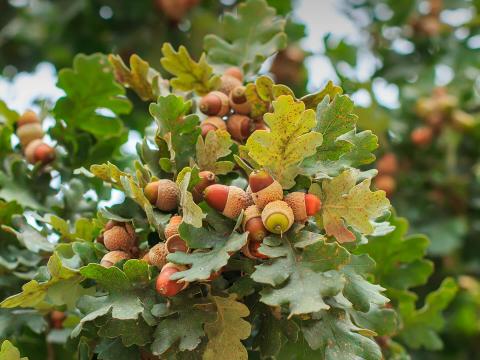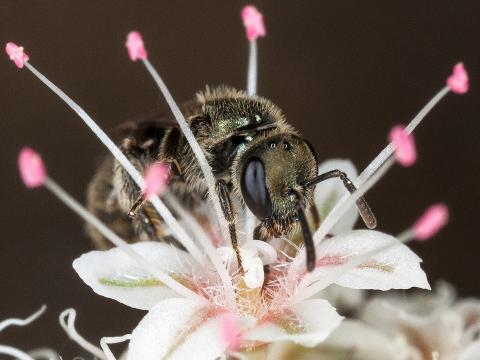Flame Vine
- DIVISION: Tracheophyta
- CLASS: Magnoliopsida (dicots)
- ORDER: Scrophulariales
- FAMILY: Bignoniaceae
- GENUS: Pyrostegia
- SPECIES: venusta
OVERVIEW
This sun-loving, evergreen vine is also known as the flame flower or the golden shower. It's native to Brazil and Paraguay, where it flourishes in rocky scrub habitats and forests that are seasonally dry. It grows quickly, spreading with tendrils; a single stem can be 80 feet (24 meters) long! Its genus name Pyrostegia comes from Greek words for "fire" (pyr-) and "cover" (steg-), and when it flowers in fall and early winter, it is engulfed in spectacular, flame-colored blooms that attract hummingbirds.
CHARACTERISTICS
The flame vine grows vigorously and branches profusely, with a dense cover of compound leaves growing in pairs opposite each other on the stem. Each leaf has three leaflets, although the center leaflet often is modified into a coiled tendril. At the stem tips, a flame vine profusely produces hanging flower clusters. Each cluster bears 15 to 20 tubular, 3-inch (7.6-centimeter) flowers, with a style and stamens that protrude beyond the curled-back petals. Petals, style, and stamen are all brilliant orange. Pollinated flowers give way to foot-long (30-centimeter), slender, dry capsules that hold winged seeds.
CULTIVATION
The flame vine will grow to cover fences and trellises—as well as trees and small buildings. With full sun or part-shade and regular watering, it is hardy to about 25 degrees Fahrenheit (-4 degrees Celsius).
CONSERVATION
In some tropical climates—including Queensland, Australia, some Pacific Islands, Tanzania, and central Florida—the flame vine has escaped cultivation and become an invasive weed, strangling and smothering trees and displacing native plants.










